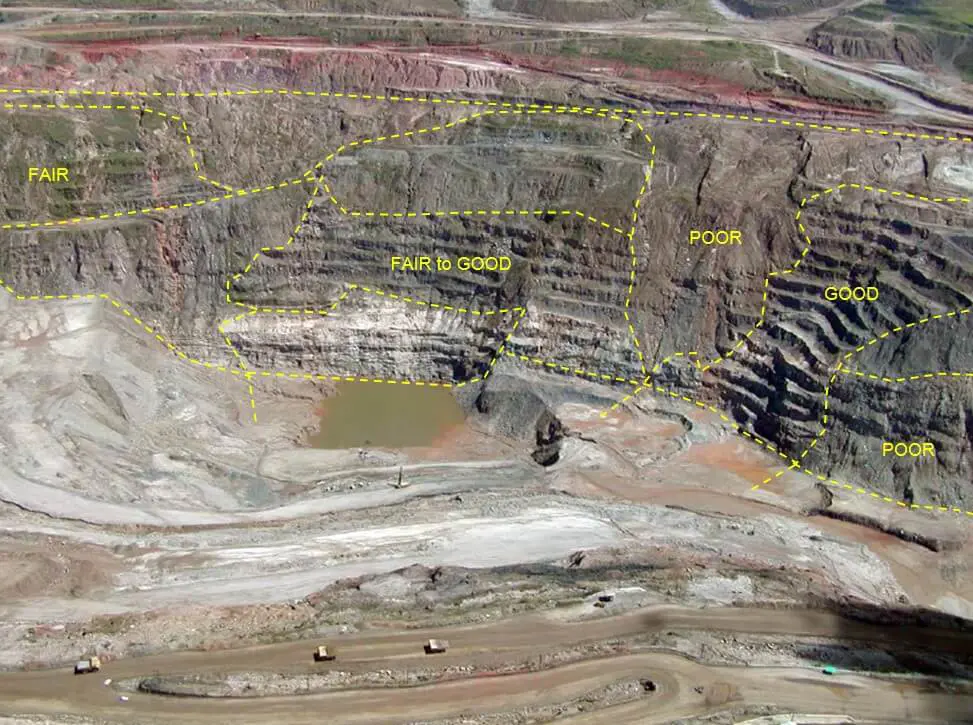Mining involves extracting a desired commodity, like gold, from a rock mass – in which the volume of waste significantly exceeds that of the mill feed. Within the mill feed, there are some fractions that are more desirable than others (e.g. low intact strength, small fragment size, and/or low-clay composition). The less time, energy, and cost it takes to mine, move, and process the ore to release the desired minerals, the more profitable the operation will be. An industry-proven way to decide how the rock is handled, is to know and understand the physicomechanical properties of the rock mass within the mine and where the ore is drawn – this is called rock mass characterisation.
Within the in situ rock mass there are two main components to be considered: the intact rock, and the discontinuities that separate the individual rock blocks. Intact rock strength is a measure of the ‘hardness’ of the material.
Several in-field empirical, field-based and laboratory methods are used to determine intact strength: for example, point-load, unconfined compressive and triaxial strength testing. The ‘toughness’ of the intact rock is related to the grain-size, shape, and bond-strength between grains. These strength measures are related to (but do not necessarily correlate with) work-indices used to quantify energy expenditure using different types of milling methods.
On a larger scale, joints separate individual rock blocks. The joints form a pre-existing network of discontinuities, which affect the gravity and confinement-driven strength of the material.
The two extremes of the joint-network phenomenon can be thought of as the rock mass that is observed in an intensely altered porphyry-style deposit, with intact weak rock-blocks of less than 0.1m3 compared to the widely spaced joints seen in marble dimension-stone operations, in which block sizes of 100m3 or more are not uncommon.
The spacing, orientation, and properties of the ‘sets’ of joints affect the direction of blast-energy effectiveness (and the stability of the final excavation). Within that fabric, faults form macro-scale planes of structural weakness, which affect the mine design and influence the hydraulic conductivity of the rock mass.
Leveraging the available knowledge of the rock mass, in the form of the domain models built using robust quantification methods, assists with planning and scheduling to minimise the energy expenditure and maximise the realised dollar-value of the rock and ore being processed. This is an iterative process, one which should be refined at each level of study (scoping, PFS, FS, and into production), and which ultimately leads to a bench or face-scale characterisation of the rock properties within the mine.

